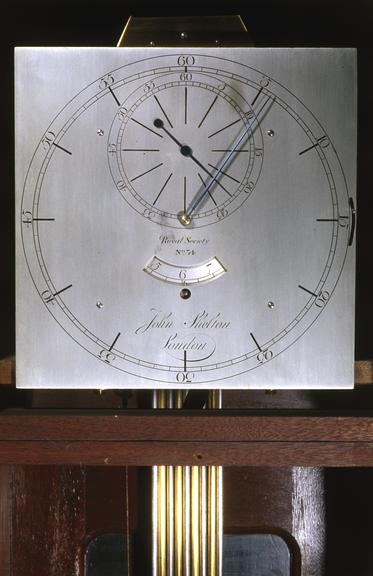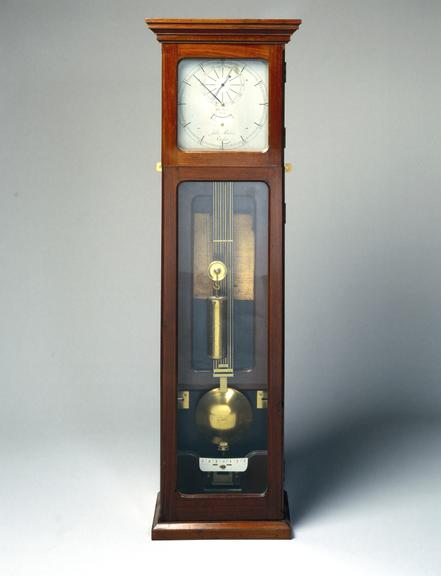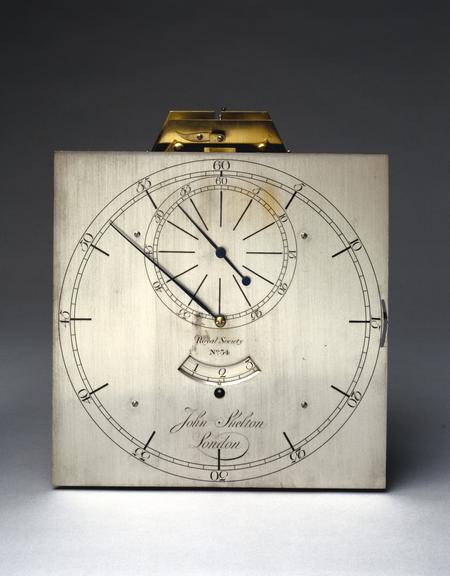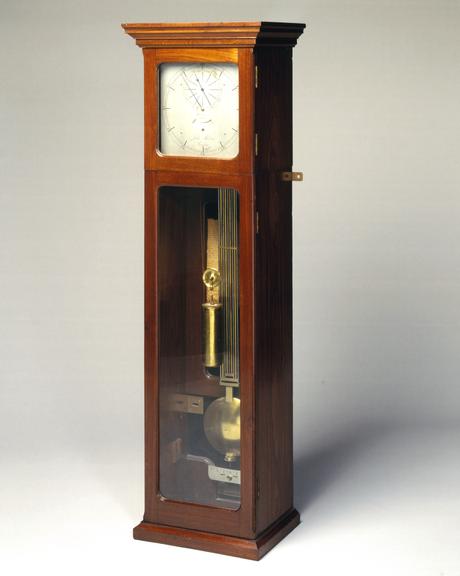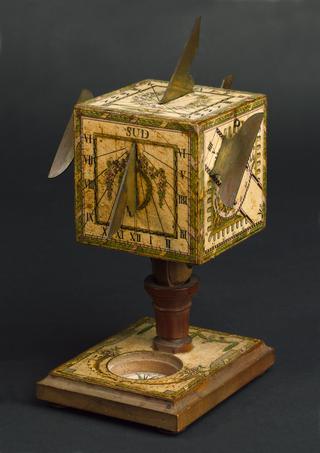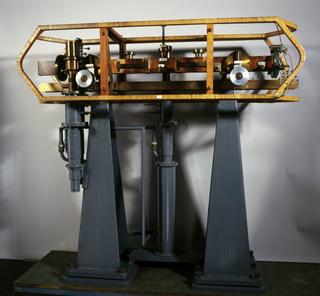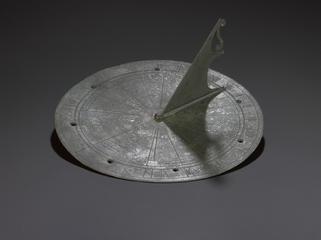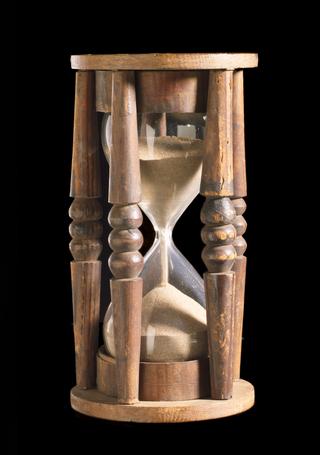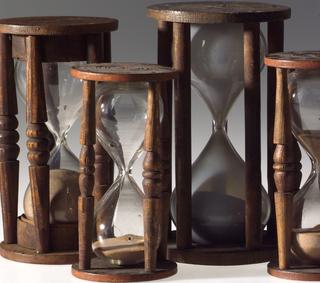Clock movement for Shelton regulator clock
Movement for regulator clock with dead beat escapement, inverted grid iron pendulum with steel knife edge pivot on an agate plate and bubble level. Originally made by John Shelton, Shoe Lane, London, 1768-9, with later modifications.
More
Regulator clocks were used as reference timekeepers for astronomical observations and gravitational experiments.
Five regulator clocks were made by clockmaker John Shelton for use during observations of the transit of Venus in 1769. One was taken by James (later Captain) Cook to Tahiti for his transit observations there; Cook later took two of the other Shelton regulators on his subsequent voyages. Inadequate evidence survives to determine if this clock was one of those used by Cook.
It is known that this clock was despatched on a variety of voyages during the 1800s, including aboard William Edward Parry’s search for the North West Passage in 1819-20.
The wooden case in which the movement is fitted, part numbered separately, was made in the 1880s whilst the clock was in use by the U.S. Coast & Geodetic Survey.
For more information on the five Shelton regulator clocks, see:
Howse, D and Hutchinson, B. (1969), ‘The Saga of the Shelton clocks’, Antiquarian Horology, pp. 281-298
- Object Number:
- 1914-591 Pt1
- type:
- instrument component and clock - regulator
- Image ©
- The Board of Trustees of the Science Museum









